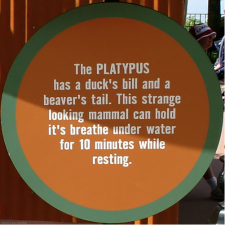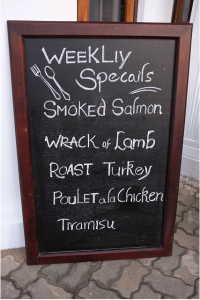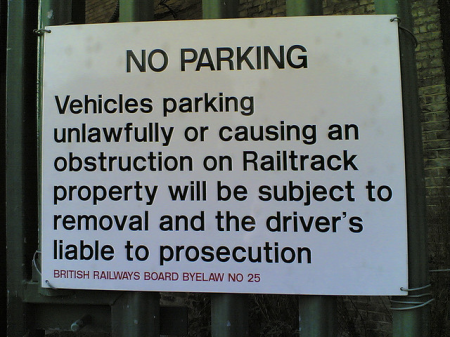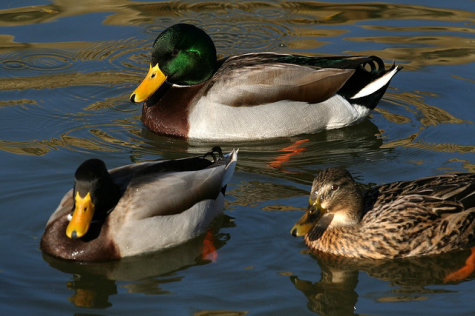Theme Essay by Paula L. Silici
Why Copy Editors Aren’t Just Giving You a Hard Time
Quibbling over a comma or apostrophe might seem absurd to anyone who isn’t an editor, but these details shape a magazine’s overall image.
It’s a lot like the familiar metaphor of a mallard gliding across a lake. Observers on the shore can’t see below the water’s surface, so the duck’s frantic paddling goes unnoticed. Yet, that smooth glide takes a lot of hard work.
At Talking Writing, we’re the equivalent of those ducks. We’ve engaged in friendly editorial battles over commas, hyphens, and capital letters—to name just a few. It’s our form of paddling, usually conducted through a flurry of email exchanges.
The end result is consistent language use throughout TW, leading to a reading experience that’s clear and clean—rather than one mired in convoluted syntax, groaner clichés, or factual errors.
Style conventions and language itself are in a constant state of flux, of course. That’s why most professionally edited magazines like TW rely on a specific reference book for style issues—be it The Chicago Manual of Style, The Elements of Style, The AP Stylebook, or a mix. Magazines also develop, over time, a set of house rules that address and remedy challenges, oddities, and exceptions to the standard rules.
It’s the oddities and exceptions that fascinate us style nerds—and there are always exceptions. Should we italicize “TW”—as we would the full magazine title—or not? (We decided not to italicize the acronym.) Should we spell out numbers or use digits? (We spell out numbers under 21—usually.)
As TW’s copy editor, I’m at the forefront of our style wars, often affably sparring with top editors Martha Nichols and Elizabeth Langosy. Now that Talking Writing is midway through its second year as a magazine, here’s an inside look at how our style has evolved and the seemingly little things we love to debate.
Battle 1: We’ll Never Meet Halfway (or Half-Way)
Hard-and-fast hyphenation rules are darned hard to come by. In fact, there are as many exceptions as rules. That’s why we often find ourselves wrangling over whether a word should be treated as a closed compound (“halfway”), a hyphenated compound (“half-way”), or an open compound (“half way”).
Compound rules have propelled us toward some spirited discussions about the most seemingly simplistic of words—such as “backseat.” After Elizabeth, Martha, and I argued back and forth about the spelling of that exact word, we finally realized we were each consulting a different dictionary.
Turns out, the three dictionaries—Oxford, American Heritage, and Webster’s—all treated the word differently. According to the first two, it is never closed. It’s open as a noun and hyphenated as an adjective. Webster’s, on the other hand, dictates that “backseat” is always closed, however it’s used.
We use a similar compound in this very column: “copyedit.” Webster’s decrees that it’s closed as a verb and open as a noun (“copy editor”), whereas Oxford hyphenates the verb.
So, who cares which spelling is used if all are deemed correct? The answer goes back to consistency. It looks like an error if the same word is spelled differently in various parts of the same publication. Too many inconsistencies—even if readers are barely aware of them—ripple the otherwise smooth surface of a magazine.
The upshot of the “backseat” discussion was that we settled on a common dictionary so we’d always be on the same page, so to speak. We chose Webster’s, simply because two out of three of us already owned it. And not just Webster’s, but Webster’s Collegiate Dictionary, Eleventh Edition—because you never know how things will change from one edition to the next.
Now you know why editors might change the spelling of a word, even though it appeared in your dictionary as you submitted it. And please note: Our old friend Spellchecker will never flag a hyphenated word as misspelled. You could write “grand-father,” and Spellchecker will tell you it’s spelled correctly.
Battle 2: Downgrading Your Title and Degree—Sorry!
When an editor lowercases an author’s professional title, another style war is often set in motion—this time with the author.
I can’t begin to say how frequently disputes arise over the proper way to treat a person’s title. This is understandable: Our instincts lean toward capitalization of titles in any circumstance as a sign of respect and achievement.
But The Chicago Manual of Style—the style bible of TW and many other literary magazines—prescribes a simple rule: A title is capitalized when it precedes a person’s name (“Executive Director Helen Smith”) and lowercased when it follows the name (“Helen Smith is the executive director”).
Another sticky dilemma is whether to capitalize college degrees or graduate programs. In this case, The Chicago Manual of Style mandates that degrees and departments are lowercased when referred to in general terms (“a master’s degree in computer science”) and capitalized when using a university’s formal name for those entities (“a Master of Science degree from the Department of Computer Engineering”).
That’s it! So please don’t feel slighted if you see your title or degree lowercased in an article or in the bio accompanying your story.
Battle 3: Do You Mean What We Think You Mean?
An artist spends time and thought selecting a color palette before painting a landscape. In the same way, writers carefully choose words that are intended to convey exact meaning.
Copyediting poetry may be one of the most demanding things I do for TW, but it’s also one of the most rewarding. I have particularly fond memories of editing Rusty Morrison’s poem, “a murmuring where nothing lets itself be heard.” Here are the first three lines of the poem as she originally wrote them:
Rough-surfaced wall, and then its crumbling against my fist
As knuckles brace to take into themselves
My body’s will to destroy what the body builds.
When Martha first read line 1, she stumbled over that little word “its.” Was this a typo? Did Rusty mean it’s (the wall) “crumbling against my fist,” as in it is crumbling? Or did she truly mean its, the possessive form?
Martha suggested that, for clarity, an apostrophe should be added to form the contraction. But when consulted by email, Rusty replied that her intent was, in fact, the possessive. She began to question her word choice, though, and told us that if the possessive form would confuse readers, we should go ahead and add the apostrophe.
As copy editor, I would be making any final adjustments. As I studied the line, I saw Martha’s point. But, even more, I understood Rusty’s intent.
Adding that one little apostrophe would change the power of the line and alter the gorgeous imagery. That beautiful nuance, that subtle shade of meaning the possessive “its” conveys, makes perfect sense when followed by the next two lines. By writing “its,” the wall itself is doing the crumbling, as if it has a mind of its own. In contrast, “it’s” would merely tell the reader that the wall’s surface is crumbling—not the same thing at all.
Battle 4: New Rules for Stylistas

Sometimes an editing conundrum isn’t addressed by either Webster’s or The Chicago Manual of Style—or we’re told that several different treatments are equally correct. That’s when we decide on our own house rule.
We’re all such obstinate sticklers that even these pick-and-choose guidelines have resulted in lively debates. Here are a couple of house rules we’ve ultimately agreed on:
Commas within Quotation Marks
Does it look weird to have the comma inside the quote mark in the following sentence?
In his companion essay, “What’s a True-Life Novel?,” Fred recounts what compelled him to convert his original memoir manuscript into the transcendent fiction of the published book.
It did to us. Even Spellchecker flags it as incorrect. But The Chicago Manual of Style holds fast to the rule that punctuation belongs inside quotation marks, even in oddball situations such as this.
Nouns Used as Adjectives
It’s an editing standard that when you combine two separate words to create an adjective, you hyphenate those words. But many words are so commonly linked together (such as “high school”) that they eventually find their way into the dictionary as permanent open compounds—even when used as an adjective or adverb.
As usage of a compound increases, it can shift from a hyphenated to a permanent open compound faster than a dictionary can keep up. So we have to decide how to treat it ourselves—a decision that’s usually set in motion when one of us notices that a hyphen has been inserted where it doesn’t seem necessary.
An example from our current issue: “slush pile” in the following sentence.
Unfortunately, it didn’t take long for me to discover that slush pile diving is far from glamorous.
Too Many Commas?
We all know that when two full sentences are connected by “and,” “but,” or “or,” a comma is required before the conjunction. But what about a sentence like the following?
My mother was a fresh-off-the-boat immigrant, and, growing up, I was always aware of how other children had better toys and birthday parties.
The comma before the “and” seemed a bit like punctuation overkill. The Chicago Manual of Style agreed: The comma was optional.
But when we debated the pros and cons, Martha, Elizabeth, and I agreed that the comma should be included. It just made sense to be consistent in using a comma before a conjunction, regardless of the complexity of the sentence.
An editor's job is not easy. And it's never done. On the surface, we may look like those mallards gliding across the lake, but beneath it all lies a determined group of stylistas. That's what makes it so much fun.
Art Information
- “Menu Typos” © Indi Samarajiva; Creative Commons license
- “No Parking” © Moi of Ra; Creative Commons license
- “Annoying Mistakes” © Glenn Loos-Austin; Creative Commons license
- “Swim, Duck! Swim!” © Bahram Dahi; Creative Commons license
 Paula L. Silici is an associate editor and copy editor for Talking Writing.
Paula L. Silici is an associate editor and copy editor for Talking Writing.
She has nearly twenty years of experience as the senior editor at Pro-Edits, where she has helped countless authors polish their work and ready it for a publisher’s eyes.
“Swallowing my ego, I reworked the story according to the editor’s wishes. Once the changes had been made, I realized this wise and gifted editor had made my story better. Much better.” —Writer Vs. Editor: Collaboration or Wrestling Match?



